With thorough COVID measures in place, the Tokyo 2020 Olympic Torch Relay kicked off on March 25.
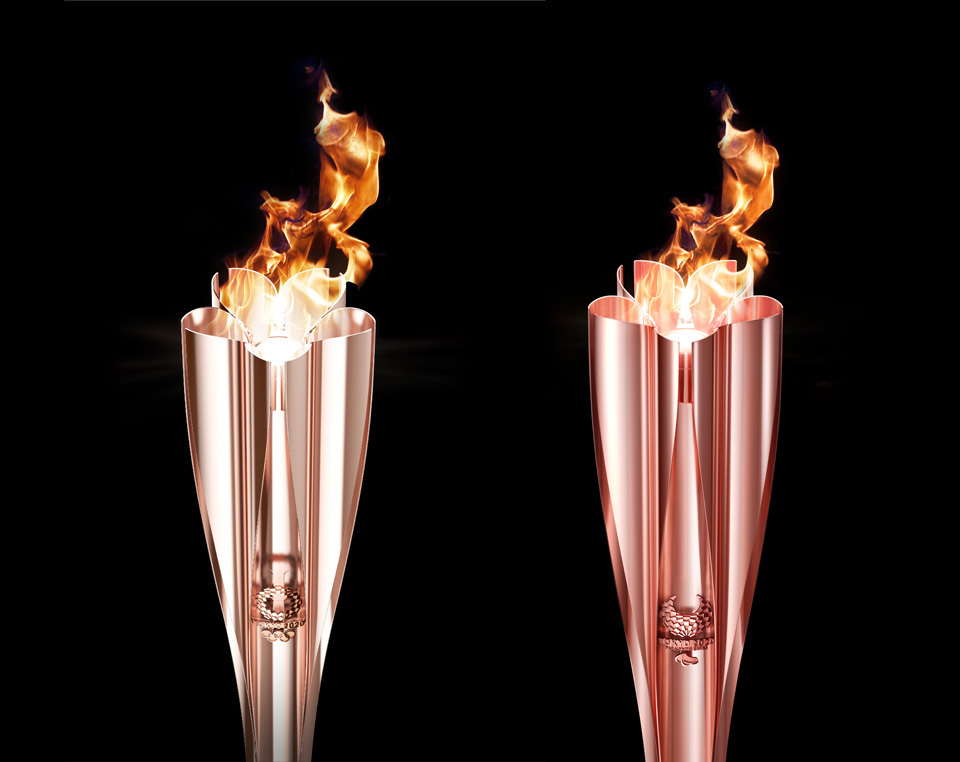
The Olympic “Sakura Gold” (left) and Paralympic “Sakura Pink” torches. The Paralympic torch relay will be held over 13 days, from August 12 to 24. ©Tokyo 2020
With the whole world watching, the Tokyo 2020 Olympic Torch Relay was launched on March 25. Starting from the three prefectures in the Tohoku region that are rebuilding a decade since the catastrophic Great East Japan Earthquake of March 11, 2011, the torch relay passes by some of Japan’s most spectacular sights over a 121-day period, until it reaches its final destination at Tokyo’s Japan National Stadium in July.
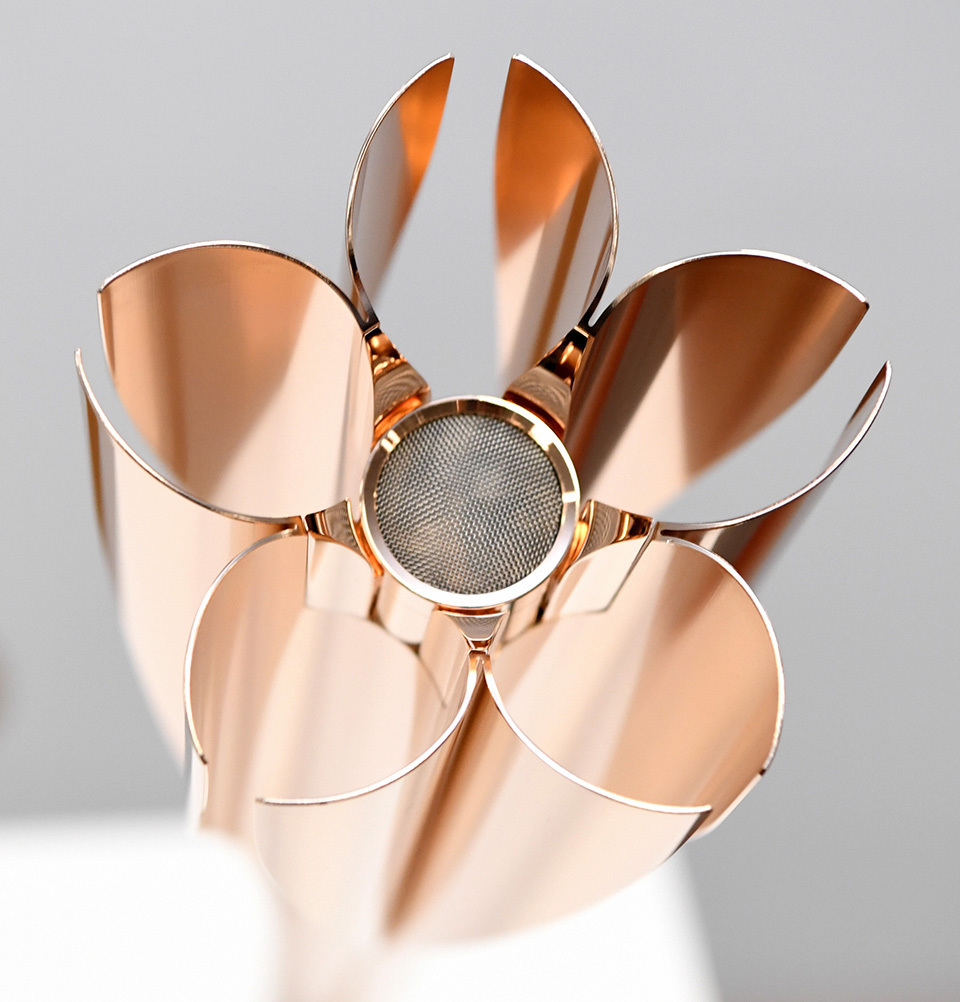
A beautiful cherry-blossom shape appears when the torch is viewed from directly above.
Conceived by one of the top Japanese designers, YOSHIOKA Tokujin, and forged by the hands of five technologically gifted companies, the beautiful and resilient torch has been shaped to resemble the crest of the traditional Japanese cherry blossom. Its body is partly made from recycled aluminum originally used to build temporary housing in the aftermath of the Great East Japan Earthquake. It encapsulates a sincere desire to see the region rebuild and epitomizes a hope for peace.
In charge of manufacturing the torch’s body was UACJ Extrusion Corporation, a world leader in aluminum processing technology. The company was able to take advantage of an aluminum extrusion technique used in the manufacture of Japan’s bullet train to overcome the difficulties of molding the metal into a delicate cherry-blossom shape. At just 1.2 kg, the result was a lightweight, seamless, and incredibly graceful form.
Meanwhile, Shinfuji Burner Co., Ltd. was in charge of the combustion mechanism. Given the significant climatic variation across the Japanese archipelago from north to south, and with the relay lasting for so long—almost four months—keeping the flame alight is no mean feat. That said, after repeated tests on the color of the flame and seeing how well it burns in wind and rain, the company managed to produce a flame strong enough to withstand wind speeds of up to 17 m/s (61 km/h) and rainfall of up to 50 mm/h, and which can also maintain its height despite fluctuations in temperature.
In addition to adhering to COVID-19 guidelines, organizers of the event have developed thorough measures to keep everyone involved—torchbearers, spectators, staff, and the general public—safe against infection during the torch relay. People are asked to take every precaution, including avoiding the “Three Cs” of closed spaces, crowded places, and close-contact settings, as well as sanitizing properly and looking after their health. The torch relay will also be live streamed so that people can enjoy the event from afar. Moreover, organizers have been given the flexibility to alter schedules according to the prevailing COVID-19 infection situation in regions along the relay route.
All these determined efforts have been made to bring the world together as one through sports. As a symbol of hope, the torch lights our way toward the Tokyo 2020 Games.
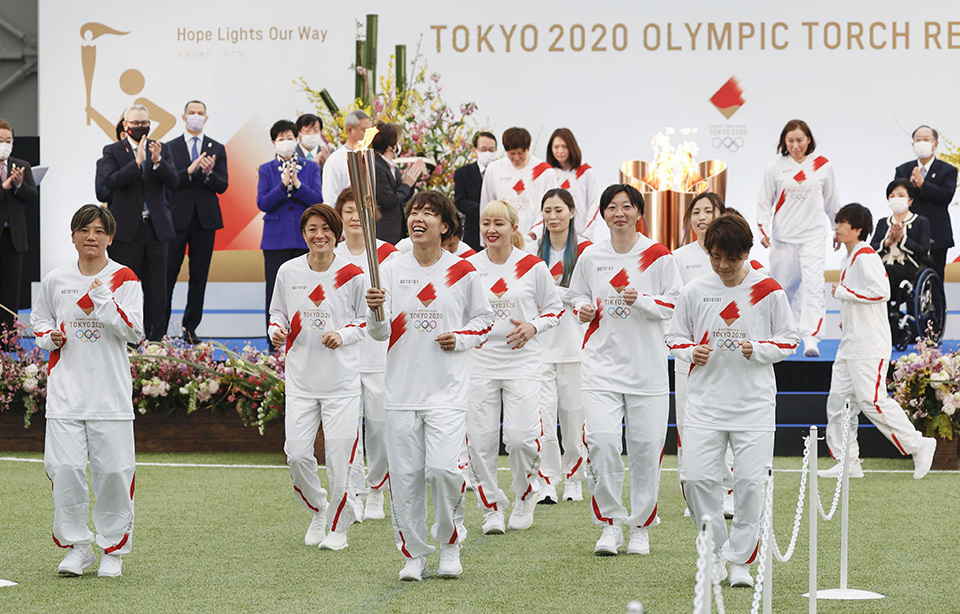
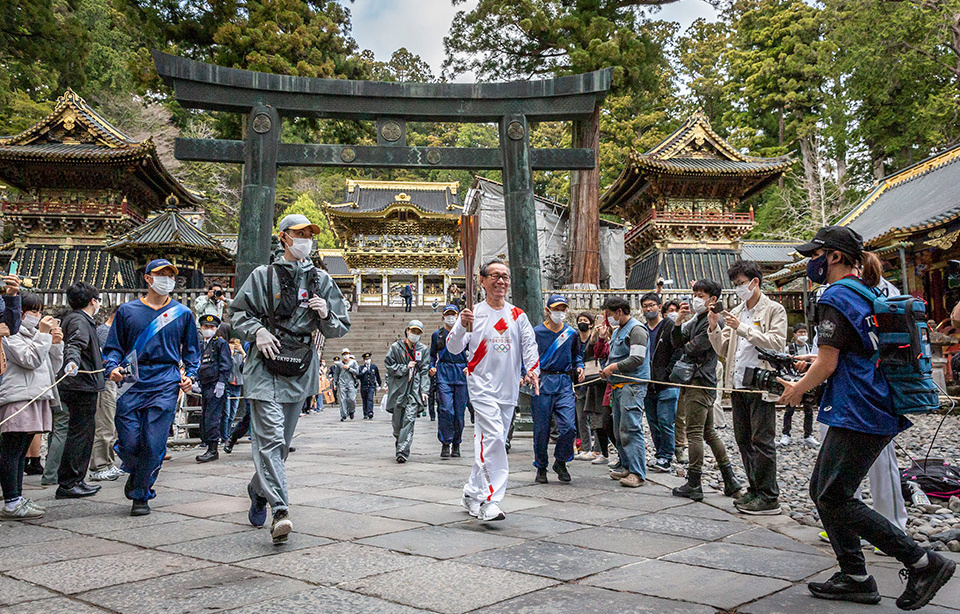
The relay started in Fukushima Prefecture. Along the route, local residents, who had taken precautionary measures against infection, applauded instead of cheering. HASHIMOTO Seiko, president of the organization committee, said at the ceremony, “We pray that the flame that embarks today will send out a ray of light into the darkness, reaching the national stadium as a big light filled with the hopes not just of Japan, but of everyone the world over.”
The Flame of Recovery
In March 2020, after the kindling of the Olympic flame in Greece, the beacon of hope made its way to Miyagi, Iwate, and Fukushima prefectures, the areas hardest hit by the Great East Japan Earthquake of March 2011. Dubbed the Flame of Recovery, the Olympic flame made its journey around the region, shining its light as a symbol of hope to the people who have worked so hard to rebuild their local communities. This year as well, the journey started again from Fukushima Prefecture—this time as the Tokyo 2020 Olympic Torch Relay—to deliver hope to everywhere in the world.
For Japan, the Tokyo 2020 Games is an event of huge importance, having been nicknamed the Recovery and Reconstruction Games. It will serve as a chance for the country to show its gratitude to those around the world who gave tremendous support following the 2011 earthquake and tsunami. At the heart of the Games is a strong determination to make great strides forward, and to show the people of the world the success of the efforts taken to rebuild the areas devastated by disaster.
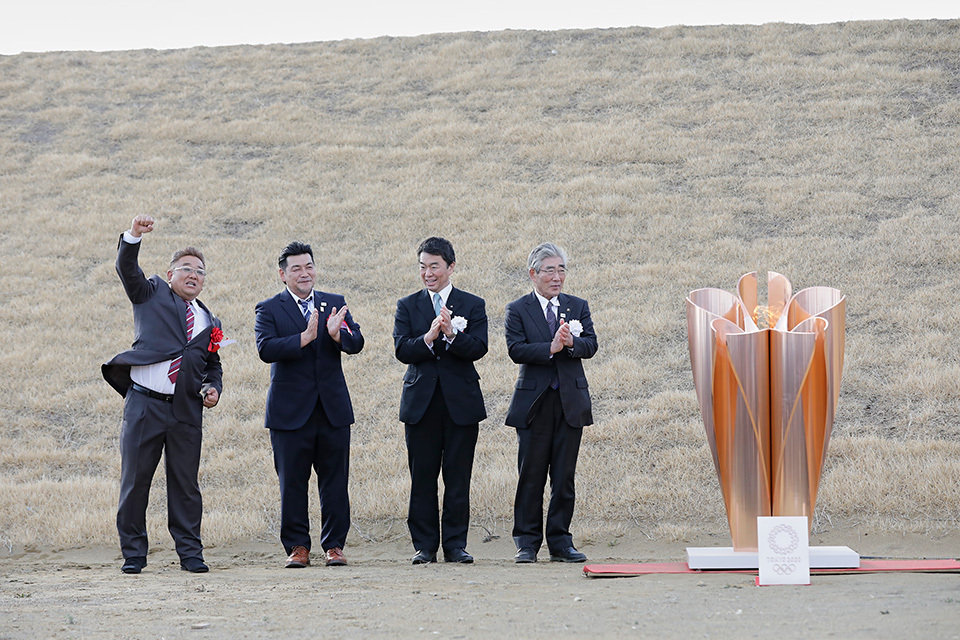
The Olympic flame on display in the Ishinomaki Minamihama Tsunami Recovery Memorial Park in Miyagi Prefecture gives hope to the local people in their rebuilding efforts. ©Tokyo 2020
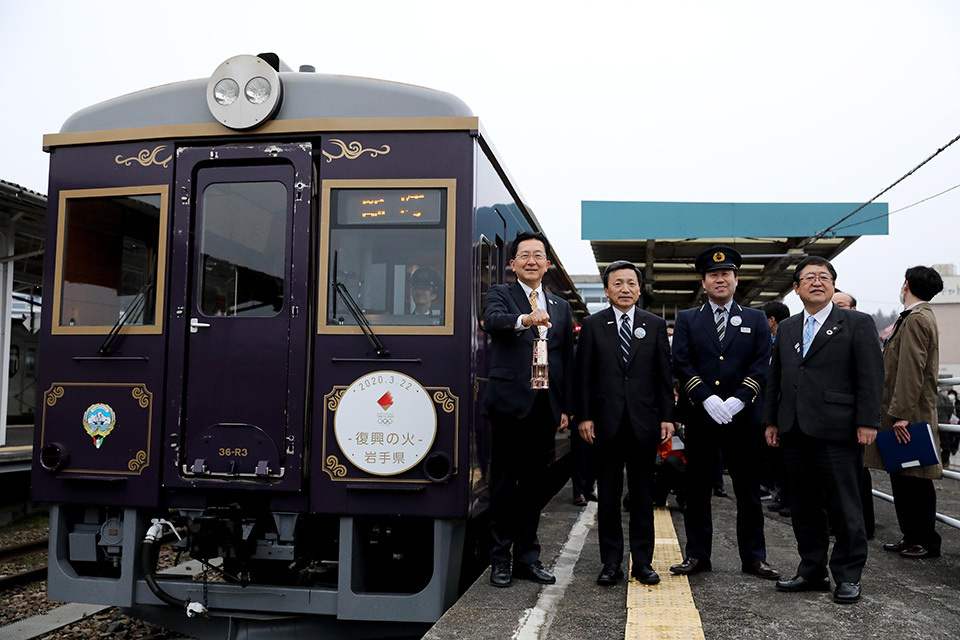
Transporting the flame along the coastline of Iwate Prefecture is the Sanriku Railway, a lifeline for local residents now completely restored after eight years. ©Tokyo 2020
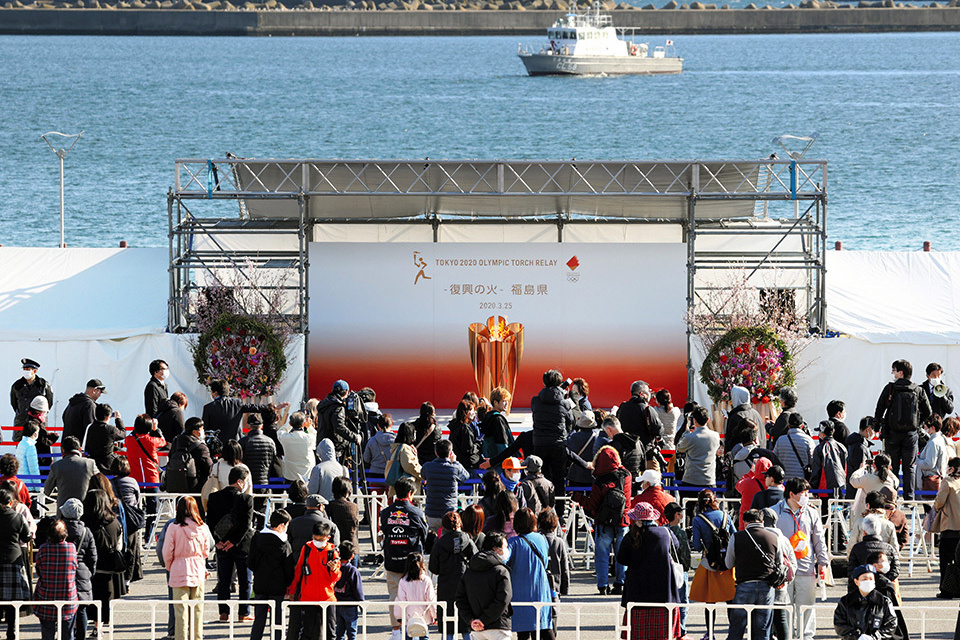
The Aquamarine Park in Fukushima Prefecture lost over 90% of its fish and animals in the tsunami. “We hope the Flame of Recovery will arrive safely at the Olympic Cauldron,” say local residents






























